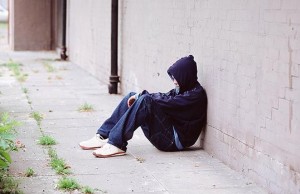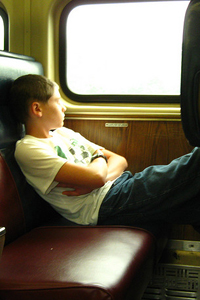 Experts estimate about 2 million kids run away from home each year putting them at greater risk of physical or sexual abuse, homelessness, drug addiction and physical and mental health problems. Many are in need of medical care or other services. To ensure runaways get the help they need, police in St. Paul, Minn. who encounter runaways are using a short, 10-question screening tool to assess the runaway’s safety and whether they have been victimized while they’ve been away from home.
Experts estimate about 2 million kids run away from home each year putting them at greater risk of physical or sexual abuse, homelessness, drug addiction and physical and mental health problems. Many are in need of medical care or other services. To ensure runaways get the help they need, police in St. Paul, Minn. who encounter runaways are using a short, 10-question screening tool to assess the runaway’s safety and whether they have been victimized while they’ve been away from home.
Medical professionals and researchers in Minnesota developed the 10-Question Tool with assistance from local police. The process began in 2002 when Laurel Edinburgh, a pediatric nurse practitioner at Children’s Hospital and Clinics of Minnesota’s Midwest Children’s Resource Center (MCRC), talked with Jim Lynch, commander of the St. Paul Police Department’s juvenile unit, about how to screen youth to identify runaways with the highest needs. But Lynch was adamant, Edinburgh said, the survey only include 10 questions because police wouldn’t have time for more.
“The community got together and started thinking about what are the interventions that can be done through the school or the police,” said Edinburgh.
Edinburgh said some of the questions in the tool were modeled on questions included in the Minnesota Student Survey given every three years to students in the 6th, 9th and 12th grades.
In communities employing the 10-Question Tool, Edinburgh said, all police receive training in its use. School resource officers — police assigned to public schools — receive additional training.
Running away is considered a status offense in most states — meaning it’s only illegal for minors — and a primary goal for police officers encountering a runaway is to determine if they need medical attention or other community resources. The questionnaire aids police in making that decision before a kid gets lost in the system, Edinburgh said.
“Because status offenders bounce between many different agencies how can you find the kid and deliver the right type of service to the teen who needs the service?” Edinburgh asked.
According to Federal Bureau of Investigation Special Agent Nathan Whiteman, police should begin an independent investigation if a runaway indicates he or she has been sexually abused.
“The officer should also look at the totality of the circumstances to refer. I think some training related to abuse and exploitation would be beneficial for officers,” Whiteman wrote in an email exchange. But he added that specially trained Crimes Against Children investigators should handle cases of that nature.
Many runaways leave because of sexual or physical abuse in their home. In fact, according to the National Runaway Hotline, more than one third of runaway girls and boys report having been sexually abused, and 43 percent report having been physically abused, before leaving home. Additionally, more than 50 percent of youth in shelters or on the street said their parents either kicked them out or knew they were leaving and did not care.
Estimates of the number of runaways in the nation vary, but a decade's old study by the federal Office of Juvenile Justice and Delinquency Prevention put it at some 1.7 million between the ages of 7 and 17. A 2010 study by the Urban Institute estimated that one in five youth had run away from home at some point before reaching age 18.
“Runaways have always been and will always be a concern,” Whiteman said. But parents can help by simply being “present in their child’s life” and listening to them.
When building the questionnaire Edinburgh said it was important to write questions that would provide the most complete picture of a runaway teen, including questions about previous abuse and drug use.
“Are there things we can identify that we know are related to high-risk teens — where we know they have some resiliency — that we can build on?” Edinburgh said.
But for the questionnaire to be effective, the teens must answer honestly.
“If youth are asked questions they do respond to adults who show they care about them,” Edinburgh said. “And we need pathways, once you ask a question, that tell us there’s intervention that can be put in place.”
Often, just knowing they have someone to talk to makes a very big difference for runaways, Edinburgh said.
“We need this kid to know that there is someone at their school or in a truancy program that cares about them; that notices they’ve run away,” Edinburgh said.
But many runaways stop going to school and can easily fall behind, so a primary goal of the 10-Question Tool, Edinburgh said, is “getting kids back to school and getting them on a normal developmental trajectory.”
The 10-Question Screening Tool:
- Why did you leave home?
- How long have you been away from home?
- Who have you been staying with while away from home?
- Did someone touch you in a way you did not like or sexually assault you when you were away from home?
- Do you have health issues that you need medical care for now?
- Has anyone hurt you or tried to hurt you while you were away from home?
- Are you afraid at home? If yes, why? Will you be safe at home? Use a 0–10 scale to quantify safe feeling (In this scale, 0 is safest and 10 is least safe).
- Do you have someone you can talk to at home or school?
- Do you drink or do drugs?
- Are you a member of a gang?
Photo by Child Quest International
